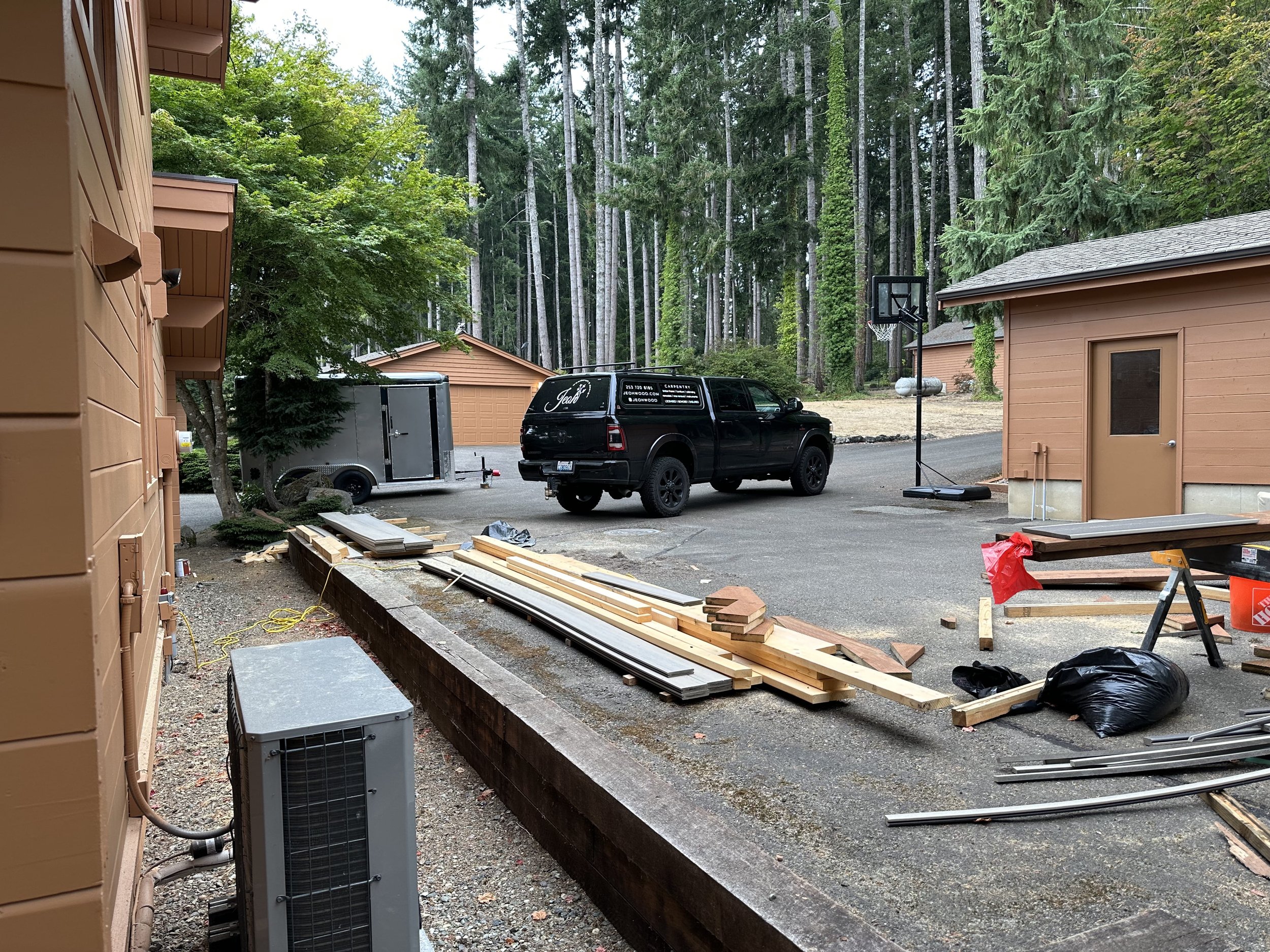ABOUT
..why work with us?
Meet the Owner
Jared was born and raised in Washington State, where he has been drawing, designing, building, and working with his hands for over 20 years. He attended Washington State University earning his undergrad in Finance & Economics.
His professional carpentry career began in a quaint Idaho resort town where he designed and built custom outbuildings. After developing expertise in structures, he wanted to build a fine carpentry skill set where the tolerances are lower than in rough carpentry. Rough carpentry is what you’ll see on today’s construction sites. He was fortunate enough to land an apprenticeship under master craftsmen at a custom cabinetry and commissioned furniture wood shop. This opportunity was where he learned the difference between a laborer and carpenter. Carpenters are highly skilled like blacksmiths and masons. You’d be hard-pressed to find a carpenter on most building sites today. With his carpentry skill set rounded out, he set out to build a company that reflected his core beliefs.


CORE VALUES
Craft
With highly manufactured components and materials, today’s building methods have reduced the trades to prefabricators, installers, and laborers. Master carpenters and woodworkers are not involved in today’s building process. Due to massive marketing budgets in commercial building products, brands, and services, their talents have been relegated to small workshops, building elegant furniture, cabinetry, and instruments. As recently as the early 20th century, these highly skilled builders were involved in the design and build of structures, homes, and woodwork. And this is perhaps the most important placement of their talents. We refuse to grieve the dying of what’s important. We reach back to timeless building methods, delivering high level craftsmanship, quality, and attention to detail.
Function
Light is an example we like to use in home building, that is often overlooked, to illustrate the importance of respecting function. Natural light is perhaps the most important element of a healthy home. You could live in the most beautifully designed home, but without rightful consideration to the way light enters it, your life energy will be emptied. Melancholy when the day is beckoning your arrival and restless when you should be spent. It’s important that the design and configuration of homes is of nature, and in harmony with it. Mother Nature is tacit in nurturing us. She will not tap us on the shoulder or whisper in our ear. We design homes in tune with her desires, and art. Working with a team of engineers we build homes of character and integrity.
In furniture, a chair for example is only comfortable if it is meticulously designed for its intended use. A dining chair at 103 degrees from the horizon may not be the best chair mated with a computer desk. Careful consideration to how our clients intend to use a piece directs us in the building process so that its function is optimal, and not sacrificed for aesthetics. A comfortable chair is a good chair.
Sustainability
While many beautiful homes surround us, their energy footprint is global and their components, woven with chemicals and building methods not optimal for healthy living, are sourced from all over the globe. It is our belief that the homes we live in should nurture and support us like a dear friend. In the Pacific Northwest we have local access to all of the components and honest materials needed to build environmentally considerate homes and furniture that will be cherished for generations.
Do you have a project?
If you have any questions, please..

